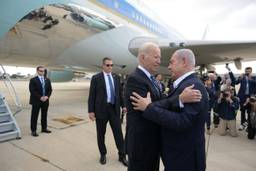Don’t Be Fooled By the Trump Spat—The CIA Is Not Your Friend
A new book reminds us that the CIA is one of history’s great purveyors of fake news.
Branko Marcetic

Finks: How the CIA Tricked the World’s Best Writers, a history of the CIA’s decades-spanning attempts to co-opt and outright recruit writers and intellectuals for its own ends, is the fruit of at least 15 years of research. Yet by some cosmic happenstance, it’s only now being released, when it’s more relevant than ever.
Joel Whitney’s book comes amidst weeks of CIA-dominated headlines as the intelligence community butts heads with President Donald Trump over allegations he owes his victory to — and is perhaps in the thrall of — the Kremlin. After a heated public exchange, Trump tried to make nice with the agency with a speech in front of the CIA memorial in Langley, Virginia. Rather than paying tribute to the agency’s fallen, however, he used the opportunity to criticize the media and insist on the tremendous size of his inauguration audience, leaving a sour taste in the mouths of some CIA personnel.
All of this has led some progressives to view the agency as a possible savior, an ally in ousting Trump. Presumably taking the standpoint that the enemy of my enemy is my friend, Democrats have suddenly flipped from being at least relatively critical of the CIA and its oversteps to stalwartly defending the agency. At least one pro-CIA sign even made it into the massive Women’s March the day after Trump’s inauguration.
It’s in this environment that Finks hits bookshelves, serving as a timely refresher that the CIA is hardly to be trusted, and in fact has a long history of using the press to shape public opinion.
Whitney outlines how over 18 or so years, starting as early as 1948, the CIA, in concert with some of its foreign counterparts, covertly funded and directed a host of propaganda ventures. While on their face, these projects — from literary magazines and book series to films and student groups — appeared far from jingoistic, beneath the surface was a campaign to wage the Cold War on the sly, combating anti-Americanism and spreading anti-Soviet, pro-U.S. messages.
Through covert funding and well-placed assets, the CIA helped create, keep alive and exert editorial control over a range of seemingly independent entities. Some were explicitly liberal, like the National Student Association in the late 1960s. Others, such as literary magazines like Encounter and The Paris Review, were cloaked in a veneer of apoliticism that left readers unaware they were being subtly manipulated. In Latin America, the CIA sponsored more than half a dozen magazines for the purpose of covertly swaying local intellectuals. “The two things these magazines had in common was that they tended to defend US foreign policy at its most egregious, facing censorship when they didn’t, and that they learned to disguise this defense,” writes Whitney.
One of the CIA’s major projects was publishing and disseminating Boris Pasternek’s opus Dr. Zhivago, which had been banned by the Soviet Union for its portrayal of post-revolutionary disillusionment. The CIA did this not out of love for literature, but because it would be a propaganda coup for the agency. When Pasternak turned down the 1958 Nobel Prize for literature for the novel, presumed by many to be a result of Soviet pressure, the Paris Review—one of the supposedly neutral literary magazines funded by the CIA and founded and run by its operatives — built an entire issue around the incident.
The CIA’s mission was often one of “soft power,” well before the term ever existed. The Congress for Cultural Freedom (CCF) — the CIA front which funded the Paris Review and other magazines — paid up to three times the money for interviews with Russian writers who it could use as anti-Communist symbols. White, Russian authors, Latin Americans and Eastern bloc writers filled the Review’s pages. By contrast, black writers — and the topic of segregation — received next to no attention form CCF-directed magazines. The CCF also maintained veto power over articles, ensuring that nothing viewed as overly critical of or negative toward American society would be published.
Whitney recounts how the CCF worked to undermine the career of Chilean poet Pablo Neruda, deemed an unacceptable cultural influence for his leftist views. Learning that Neruda was in the running for the 1964 Nobel Prize for literature, the CCF launched a smear campaign to discredit the poet. This campaign “traumatize[d] those closest to Neruda for decades,” Whitney writes, linking Neruda to Stalin and alleging that he was involved in trying to assassinate Trotsky in 1940. At the same time, the CCF gladly used Neruda’s poetry for one of its Latin-American magazines, utilizing him to mask the CIA’s reactionary politics even as the agency worked to destroy his life.
The CIA’s use of Neruda was part of a broader approach of using largely left-wing writers to carry out its bidding. Readers — along with many of the contributors themselves — were unaware of the CIA ties of the various enterprises they were involved in, and that left-wing figures were being “used to disguise the United States’ reactionary politics with a more liberal face,” as Whitney puts it. Colombian writer Gabriel García Márquez, one of those who had been unwittingly “weaponized,” told his friend he felt like a “cuckold” when, in the mid-1960s, the New York Times revealed the CIA’s patronage of dozens of literary magazines, one of which—Mundo Nuevo—he had written for.
Other participants were more willing. At the center of Finks is the aforementioned Paris Review, a literary magazine founded in 1953 by Harold “Doc” Humes, Peter Matthiessen and literary darling George Plimpton.
Matthiessen was eventually outed as a CIA asset, while Plimpton remained cagey through his final days on his exact connection to the agency. Whitney draws on documents, however, that suggest Plimpton was well aware of the CIA’s role in the magazine he was running. Humes was not. He was riven with (ultimately justified) paranoia about being spied on, and the revelation of Matthiessen’s CIA ties contributed to his psychological breakdown.
These are not the only famous names to make their appearance in the book as CIA employees. Others include Irving Kristol, father of Bill and a founding father of neoconservatism; Arthur Schlesinger, the Kennedys’ “court historian”; and William F. Buckley, Jr., pre-eminent conservative, TV personality and founder of the National Review.
There are also some tantalizing, lesser-known threads Whitney alludes to, though they deserve further pulling. These include the book’s coda, examining Paris Review co-founder John Train’s role as a conduit for CIA money in Afghanistan during the 1980s Soviet invasion, financing various propaganda ventures and embedding the media with stories favorable to the agency’s chosen narrative.
Another enticing diversion is a segment on Operation Chaos, for instance, a covert war on the independent antiwar press, with CIA agents infiltrating magazines like the feminist, pro-LGBT antiwar paper Quicksilver Times, and sowing discord within them.
Operation Mockingbird, revealed by Carl Bernstein in 1977, is also briefly mentioned. Mockingbird saw the CIA place agents and connections in virtually every major mainstream news outlet, going right to the top. Some, like the New York Times’ Arthur Sulzberger, signed secrecy agreements with the agency, while others had more informal, social ties to the agency that didn’t require legal documentation. The CIA operated a network of (by one estimate) 900 foreign journalists paid to spread propaganda anywhere in the world at any time, propaganda which two former agents claimed regularly found its way into U.S. media.
While Whitney’s book ends in early-1980s Afghanistan, we know that such efforts continued. In 1986, it was revealed that the Reagan administration had engaged in a “deception” campaign against 1980s-era bogeyman Moammar Gadhafi, selectively feeding the media with false information — one might say, fake news — to make him believe he would be imminently attacked by the United States or even toppled. This involved spreading false or exaggerated reports about the disloyalty of his underlings or internal opposition within Libya.
In December 1991, a now-declassified CIA report noted the CIA’s deep connections in the worlds of business, academia and the media, including “relationships with reporters from every major wire service, newspaper, news weekly and television network” (the CIA’s emphasis). This, the report boasted, allowed the agency to turn “intelligence failure” stories into “intelligence success” ones, plus “postpone, change, hold, or even scrap stories that could have adversely affected national security interests.”
While it may be decades before we know the exact scope of the CIA’s collusion with the media today, there are suggestions that the agency continues to enjoy a cozy relationship with members of the media. In 2014, Ken Silverstein reported that one Los Angeles Times reporter habitually sent drafts and summaries of his stories to the CIA, assured the agency of positive coverage and wrote stories that intentionally offered a positive slant toward the agency. The CIA also regularly invites reporters from the New York Times, the Washington Post, Fox News and NPR to its headquarters for briefings.
Finks, then, is invaluable reading material in the present moment. It’s an excellent overview of the information war launched and fought by the CIA since its inception, and presents a detailed look into how such “soft” propaganda was made and operated.
All of which brings us to the current stoush between the agency and Trump. At a moment when liberals and Democrats raise the alarm over “fake news,” yet happily run with second-hand testimony of intelligence officials or unverified rumors leaked to the press, Whitney’s work should provide us with a sobering dose of caution. Reports suggest the Trump campaign is currently being investigated for its alleged connections to the Kremlin, and perhaps at the end of it all we’ll see evidence that confirms the most explosive allegations are true. Until that time, we should think of Whitney’s book and remember that intelligence agencies have never been strangers to using the press to manipulate public opinion.
Branko Marcetic is a staff writer at Jacobin magazine and a 2019-2020 Leonard C. Goodman Institute for Investigative Reporting fellow. He is the author of Yesterday’s Man: The Case Against Joe Biden.








